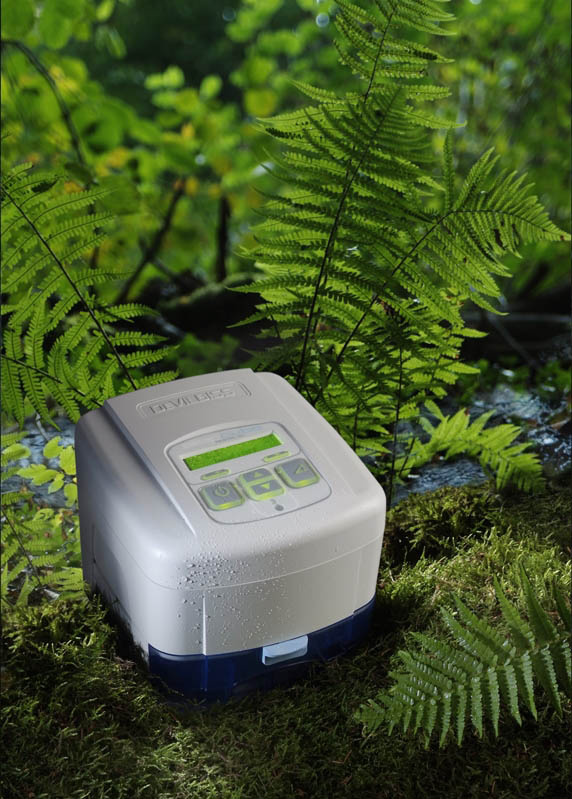Last updated on November 29th, 2022 at 09:15 am
Understanding sleep apnoea indicators
A CPAP machine can help provide you with a restful night of sleep, as it will provide a continuous flow of oxygen. However, these units can sometimes be slightly confusing to understand, particularly if you are becoming acclimated to their functions. Let’s take the confusion out of this scenario by examining what specific readings signify. You can therefore make the most out of these modern marvels.
Intus Healthcare advice: If you are concerned, you may have OSA, then a sleep test/sleep study done by us or the NHS will help you find out. If your result confirms Sleep Apnoea, you will probably benefit from (and be eligible for) CPAP therapy.
Apnoea-Hypopnea Index
One of the critical indicators that we use in our sleep test report is the AHI. There are other indicators, but to illustrate a simple idea of your potential issue, I’m going to explain the AHI, which stands for the Apnoea-Hypopnea Index.
Hypopnea occurs when your airway significantly narrows or partially collapses. Apnoea represents an event where the airway completely collapses. In other words, apnoea is a more severe condition. The AHI signifies the number of times every hour that your airway either partially or wholly closes. The main goal of the AHI is to determine the severity of your condition and evaluate how efficiently the CPAP is working.
Let’s see how this index is broken down into different categories:
- Fewer than five instances: normal.
- Between five and 14.9: mild apnoea.
- Between 15 to 29.9: moderate apnoea.
- Higher than 30: severe sleep apnoea.

Pressure
As you might have already surmised, this reading signifies the amount of pressure that the CPAP machine is delivering to your airways. However, keep in mind that most CPAP machines offer a fixed pressure setting (as opposed to an APAP or a BiPAP).
The main point here is that you will need to find the optimum level of pressure so that your breathing will not become impeded during the overnight hours. While some individuals may wish to set this pressure to a lower reading to enjoy greater comfort levels; this might not always be the best option.
It is therefore wise to consult with a sleep specialist. He or she will be able to determine the correct pressure settings within a clinical environment. These can then be applied at home. If you instead require a variable level of pressure, an APAP machine might represent a valuable alternative.
Several variables can impact your pressure setting.
These may include:
- A deviated septum.
- If your soft palate tends to collapse while sleeping.
- Allergies or a cold.
- If your tongue relaxes to the point where it partially or fully blocks your airway.
Those who are overweight could also require a higher pressure setting. This is why it is essential to obtain professional advice and not manually manipulate your CPAP device’s pressure.
Leak
Although this may appear to be a self-explanatory reading, there is slightly more than meets the eye. Your unit normally measures the flow of air in terms of litres per minute. A slight amount of air escaping from the unit is actually quite normal. This is primarily due to the presence of an exhalation port that is built directly into the mask.
Leak values are considered during the manufacture of your machine, and values that fall within normal ranges are commonly referred to as ‘intentional leaks’. These types of leaks are partially engineered to prevent you from breathing in unhealthy levels of carbon dioxide during therapy.
However, there can be other times when you notice that the “leak” icon is frequently activated. This is relatively common if the CPAP mask is more than six months old. It may be time to purchase a replacement. Other circumstances can cause the leak indicator to display.
These include:
- The mask may be too big.
- Facial hair beneath your nose could cause a poor seal.
- The style of the CPAP mask might not be appropriate for your face and mouth.
Leaks may also inadvertently occur during the overnight hours if you happen to change positions while sleeping suddenly. If you suspect that this is the case, it could be wise to purchase a specifically designed pillow to accommodate the presence of a mask. Speak with your doctor or sleep therapist to learn more about this option.
Ramp
Depending upon the style of your machine, this next feature may or may not be present within the display. Some units have been designed to gradually increase or decrease the pressure when the unit is initially activated. The main intention behind this option is to allow you to become more comfortable when falling asleep (as opposed to being immediately exposed to full pressure levels). The airflow will then slowly increase (or “ramp up”) until it reaches a satisfactory level.
During this stage, you will notice the ramp icon is activated. It may also display a numerical figure. This represents the duration of the ramp stage measured in minutes (for example, 20 or 30). In the majority of cases, you will likely fall asleep well before the cycle itself completes. If you observe a much higher initial pressure or if the ramp icon suddenly disappears, it is best to consult with the manufacturer to diagnose any potential issues with the CPAP machine.
When might my readings indicate a problem?
It is finally prudent to take a quick look at when you should seek professional advice when dealing with one of these units. It can be argued that the AHI (apnoea-hypopnea index) is the most crucial reading to monitor. However, certain situations can cause this figure to fluctuate, such as:
- If you are ill.
- If you are prone to sleep on your back.
- If you have recently been prescribed muscle relaxants.
- If you consumed alcohol before bed.
It is, therefore, better to take longitudinal readings over 30 or 60 days. These will provide you with a much more insightful overview of how your machine is affecting your condition. Having said this, readings that suddenly spike within the high range (more than 30 instances each hour) for no apparent reason should be reported to a sleep specialist as soon as possible. This could indicate an issue with the machine or that the treatment needs to be modified. Of course, other indicators such as a leak or pressure fluctuations should also be monitored closely. There can be times when a unit may need to be upgraded to address your unique condition.
Putting it all together
Getting the most out of your CPAP machine invariably involves knowing how to interpret its diagnostic display. While units will naturally vary between different manufacturers, this article should serve as a basic guide. If you have additional questions or should you suspect that there may be an issue with the unit, always make it a point to speak with your doctor as soon as possible.



